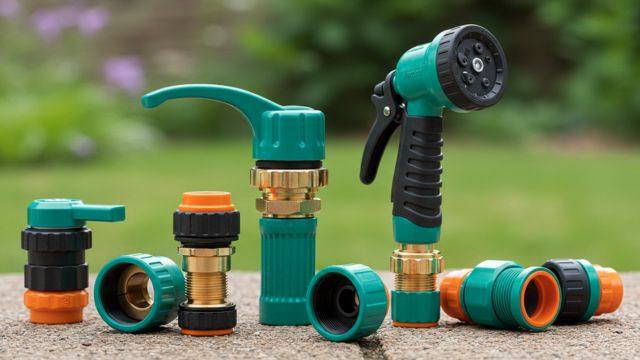A garden tap might seem like a simple outdoor fixture, but it plays a crucial role in keeping your garden watered and your outdoor chores flowing smoothly. However, the humble garden tap faces one major challenge, especially during colder months — freezing temperatures. When water inside the tap or connecting pipes freezes, it expands and can cause serious damage, leading to costly repairs and frustrating leaks.
Understanding the science behind effective garden tap protection is essential to prevent this common winter woe. In this article, we’ll explore how freezing affects your tap, why protection matters, and the scientific principles that make certain Protecting your garden tap from harsh weather conditions and wear is essential to avoid costly repairs and ensure it lasts through the seasons. While there are plenty of commercial A garden tap is one of the most useful features in any outdoor space. It provides easy access to water for gardening, cleaning, and other household tasks. But the elements can be tough on your outdoor tap, especially during harsh winters or scorching summers. Protecting your garden tap all year round not only prevents damage but also extends its lifespan and keeps your water supply running smoothly. Choosing the right Winter brings its own set of challenges, and for gardeners, one common concern is protecting outdoor taps from freezing temperatures. A frozen garden tap can lead to burst pipes, costly repairs, and the inconvenience of losing water access when you need it most. Fortunately, there are several simple yet effective ways to safeguard your outdoor taps from the harsh winter cold. This article explores practical strategies to ensure your Garden Tap Protector remains intact and functional throughout the chilly months.
effective. By grasping these concepts, you’ll be empowered to choose the best protection methods and keep your outdoor water supply safe all year round.
How Freezing Temperatures Affect Garden Taps
Water is unique among liquids because it expands when it freezes. This expansion can exert tremendous pressure inside pipes and taps. When water trapped inside your garden tap freezes, it pushes against the metal or plastic casing, which can cause cracks or even burst pipes. This damage not only disrupts your water supply but can also lead to water damage in your home if the pipes burst behind walls or under floors.
The process begins when the outdoor temperature drops below 0°C (32°F). Initially, water inside the tap cools and begins to freeze from the outside inwards. As ice forms, the water molecules lock into a crystalline structure, increasing in volume by about 9%. This expansion applies stress to the rigid pipe or tap housing, which eventually reaches a breaking point if left unprotected.
Additionally, even after the ice melts, tiny cracks can remain, leading to slow leaks that waste water and increase your bills.
Why Garden Tap Protection Is Important
Protecting your garden tap isn’t just about avoiding repairs; it’s also about maintaining the integrity of your entire outdoor plumbing system. Frozen and burst pipes can cause water outages during winter, leaving you without access to your garden water supply at a critical time.
Protection also means peace of mind. Knowing that your tap is insulated and shielded from cold reduces worry about sudden damage and unexpected repair costs. Moreover, effective tap protection helps conserve water by preventing leaks caused by frost damage.
The Science of Insulation: How Tap Protectors Work
At the core of garden tap protection is insulation — a concept grounded in thermodynamics, the science of heat transfer. Heat naturally moves from warmer areas to cooler areas until temperatures equalize. When your tap is exposed to freezing air, heat escapes from the tap’s metal surface into the chilly surroundings.
An effective garden tap protector works by slowing down this heat loss. It acts as a barrier between the tap and the cold air, reducing the rate at which heat dissipates. This helps maintain the tap’s temperature above freezing for longer, preventing water inside from turning to ice.
There are three main types of heat transfer that insulation combats:
- Conduction: The direct transfer of heat through solids, such as metal pipes and taps.
- Convection: The movement of heat through fluids like air or water.
- Radiation: The emission of heat in the form of infrared rays.
Good tap protectors are designed to minimize all three types of heat loss.
Materials Matter: What Makes an Effective Tap Protector?
The choice of material for a garden tap protector directly impacts its insulating ability. Common materials include foam, rubber, plastic, and sometimes fabric composites. Each material interacts with heat differently:
- Foam: Closed-cell foam is especially effective because its structure traps tiny air pockets, which are poor conductors of heat. These pockets reduce heat flow by conduction and convection, making foam an excellent insulator. It’s lightweight, flexible, and easy to fit around different tap shapes.
- Rubber: Rubber offers good insulation by limiting heat conduction. It’s also water-resistant, protecting the tap from rain and moisture that could accelerate freezing.
- Plastic: Hard plastic housings provide physical protection from impacts and block wind chill, which can dramatically lower temperatures through convection. However, plastic alone doesn’t insulate as well as foam or rubber, so many plastic protectors include foam linings.
- Fabric composites: Some protectors use layers of fabric combined with insulating materials. While these offer moderate protection, they are usually less effective in severe frost conditions.
The Role of Design in Garden Tap Protection
Beyond materials, the design of the protector is critical for performance. A well-designed protector will fit snugly around the tap, eliminating gaps where cold air can sneak in. Secure fastening methods, such as straps or elastic edges, prevent wind from dislodging the protector.
Additionally, the protector’s shape matters. A box-like housing with a lid allows for easy access while still enclosing the tap in an insulated environment. This design helps reduce heat loss through radiation and convection by minimizing exposed surfaces.
Ventilation also needs consideration. While the tap should be insulated, any moisture trapped inside the protector could cause problems like mold or mildew. Some protectors include small vents to allow moisture to escape without letting cold air in.
Practical Science: Why Leaving a Tap Slightly On Helps
An interesting tip often recommended is to leave the garden tap slightly open during freezing conditions. Scientifically, this works because moving water freezes at a lower temperature than still water. The slow drip prevents water from sitting stagnant inside the tap and pipes, reducing the chance of freezing.
This method can be effective but is best used alongside insulation. The drip alone won’t protect pipes from severe cold but can be a helpful extra precaution in milder frost.
Combining Science and Practicality for Best Results
The most effective garden tap protection combines good insulation materials, smart design, and practical measures like draining the tap after use or leaving a slow drip. Understanding the science behind heat transfer and freezing helps you appreciate why simply wrapping your tap in a towel won’t cut it — you need materials that trap air, resist moisture, and fit securely.
By investing in a well-made tap protector and following sensible winter prep routines, you reduce the risk of frozen taps and the costly damage they cause.
Conclusion
The science behind effective garden tap protection is fascinating and practical. It all boils down to managing heat transfer and preventing water inside the tap from freezing and expanding. Materials like foam and rubber, combined with thoughtful design, create barriers that keep cold air out and warmth in.
With this knowledge, you’re better equipped to choose the right protector for your garden tap, keeping your outdoor plumbing safe from winter’s worst effects. Understanding the science means you can protect your garden tap efficiently and enjoy your outdoor space without interruption, no matter the season.



